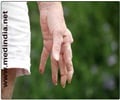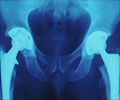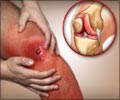Diagnosis of Oligoarthritis
Diagnosis plays a very important role in the treatment as it can ensure the best possible outcome. Any child with symptoms of joint pain should be taken seriously and attended by a specialized physician (pediatric rheumatologist). Any delay in the diagnosis can result in irreversible damage to joints, eyes or other organs. It is very important to diagnose the type of arthritis the child is suffering from. If the problem is perceived to be mild, it may delay institution of proper available treatment. Diagnosis of a mild form as severe can lead to an overdose of drugs and result in side effects.
The ultimate goal of the treatment should be to limit the joint damage to the maximum possible extent. This is usually done using administration of drugs that suppress the immune system (immunosuppressant). This should however not suppress the immune system so much that the child is prone to developing infections very easily.
Several factors play a crucial role in the diagnosis. A few of the important aspects are given below:
- Medical History: Parents usually recall that their child looked funny during his first walk in the morning, which gets better after sometime (30 to 40 minutes). They usually attribute this to perhaps a wrong posture during sleep.
- Physical Examination
- Blood tests: It can identify the presence of ‘anti-nuclear antibodies’. Children with juvenile arthritis are unlikely to have rheumatoid factor in their blood. Blood tests have a limited role in the diagnosis.
- X-rays of the joints and limbs.
- Eye examination for early detection of eye disease
Note: It is very important for parents to observe their child’s symptoms closely to avoid any complications. Infections and fever should raise concern and should be reported to the attending physician without any delay. Under some circumstances such as chicken pox, the usual arthritis medicines have to be stopped on a temporary basis until the condition improves.
Click here to Read More About: Anti-Nuclear Antibody Test.
















